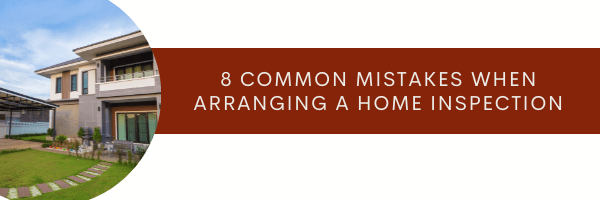Are your clients making these mistakes?
- Not doing your own research.
Check out the company’s website and read their sample reports. Call the office and ask questions. Look for reviews on more than one platform.2. Not ensuring the inspector is a member of one of the major inspector associations: CREIA or ASHI.
Through either of these associations, you are guaranteed the inspector has passed required exams, completed a background check, and will follow their standards of practice.3. Not making sure the utilities will be on during the inspection.
On occasion, we arrive to inspect a property and some or all utilities have been turned off (we see the gas off most often). This leaves important electrical, water and gas items uninspected. Most inspection companies charge a fee to return to the property after utilities get turned on.4. Not signing the contract before the inspection.
Insurance companies will not cover any inspector who doesn’t get a signed contract in advance. Make sure you have returned the contract well before the time of the inspection, so you don’t experience any hiccups with the scheduling of your inspection.5. Not allowing enough time to have the inspection done and still follow the inspector’s recommendations.
Any issues flagged should be investigated further by a specialist during inspection contingencies.6. Not being present at the inspection.
A live briefing and walk-through is always more beneficial since the inspector can point out the actual defects rather than the client just looking at a flat image on a page. Another advantage is that you can ask the inspector your questions while the details are fresh in his mind.7. Not reading the report from beginning to end.
The inspector is there to flag possible issues and make recommendations. Take advantage of his expertise by reading the report in it’s entirety and taking his suggestions to heart.8. Not ensuring proper access to the entire home.
Occasionally, the inspector will arrive and find the crawl space, attic, or other important areas of the home are blocked with personal items or locked. These areas are then left uninspected and most inspection companies charge a fee to return to the property once accessible.


